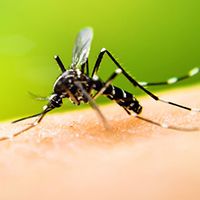Article
Positive Zika Tests Not Dependent on Clinical Symptoms
Author(s):
In review of US-based infections during the 2016 outbreak, investigators found more telling indicators of the virus are patients' proximity to other infected patients, and their desire to be tested.

A retrospective review of medical records documenting tests for the Zika virus in US residents during the aftermath of the 2015-16 outbreak through the Western hemisphere found that clinical symptoms alone are not enough to differentiate between people with or without the virus.
The data, presented at the 2018 IDWeek Annual Meeting in San Francisco, CA, holds implications for the future screening of at-risk individuals in the event of another outbreak.
In 2016, the Zika virus became a nationally notifiable condition in the US, with the US Centers for Disease Control and Prevention (CDC) reporting 5168 symptomatic cases in US states and another 36,512 symptomatic cases in US territories. Its method of transmission into the continental US can be mapped by metrics: 99.6% (36,367) of territory-based cases were acquired through presumed local mosquito-borne transmission, and 94.7% (4897) of state-based cases were borne from travelers returning from affected areas.
According to the CDC, another 224 state-based cases were acquired through presumed local mosquito-borne transmission in either Florida or Texas—a pair of states with 1419 cases between them that year (Florida = 1107; Texas = 312).
Led by Lauren Leigh Smith, MD, of the Jackson Memorial Hospital, University of Miami, investigators at the southern Florida-based medical center assessed the medical records of 40 non-pregnant individuals tested for Zika from September 2016 to January 2017. Because of the medical center’s proximity to ongoing transmission areas at the time and is equipped with an emergency response system, it served as a viable outlet to test the efficacy of symptom-based diagnosis in individuals at the height of the outbreak.
Investigators collected demographics, clinical data, and rationale for testing for Zika in the patients’ electronic medical records, and compared details between those who did and did not test positive for the virus.
Nearly every individual (39 [92%]) was tested in the hospital setting, with a lone exception tested in an outpatient setting. Among the 40 tested individuals, 14 had tested positive for Zika. The individuals with the virus were more likely to reside in an area with active Zika transmission (39%) than individuals who tested negative (4%; P = .012).
The most commonly reported symptoms which prompted testing for the virus were fever, myalgia, arthralgia, and headache. However, the presence of all these symptoms was significantly different among individuals who tested positive or negative for the virus. Investigators only pointed to skin rashes as being a significantly more common symptom of individuals who tested positive (93%) than in those who tested negative (27%; P < .001).
Investigators also noted that 36% of individuals who tested positive for Zika had personally requested their testing; none who tested negative had requested the test (P = .003).
Lone clinical symptoms are not a reliable indicator for positive Zika virus diagnoses, investigators concluded. That said, they pointed to the prevalence of skin rash, patient requests, and exposure to transmission areas as important factors for healthcare providers to consider when identifying a Zika infection.
“Similar approaches should be utilized in response to future emerging infectious threats,” they wrote.
The study, "Zika Testing in a Large Academic Center During a Continental US Outbreak," was presented at IDWeek 2018.
Click here to sign up for more MD Magazine content and updates.
Related Coverage >>>
High-Dose Trivalent Versus Quadrivalent Influenza Vaccination: Which Is Better?
Intervention Boosted Engagement In Patients with HIV At Risk for Becoming Un-retained
Opt-Out Testing for HIV, Hepatitis C Could Improve Diagnoses in the ED





